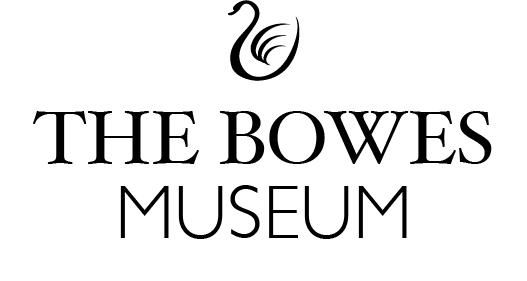
The Surrender of Seville to Ferdinand III, King of Castile and Leon
The panoramic view of Seville depicts the surrender of its last two Muslim leaders, Al-Xataf (also known as Al-Shaqaf) and Ibn Djuib, to the Christian King, Ferdinand III, in 1248. Ferdinand was celebrated long after this event for capturing a succession of Muslim controlled cities in Andalusia and was canonized in 1672. After the surrender, Al-Shaqaf moved to Ceuta in North Africa, where he became a judge.
The surrender scene was one of the most popular among Seville’s residents, who were understandably proud of their city. This painting offers a detailed panorama of Seville’s townscape as it was in the first half of the seventeenth century, although the actual surrender took place in the thirteenth. The Cathedral’s Giralda tower is crowned by the rotating statue of Faith, which acted as a weathervane and had been added in 1567. In the foreground, the busy dockyards of the Guadalquivir River lie alongside the Torre de Oro (Golden Tower), the former Muslim Almohad defensive watchtower.
By the seventeenth century Seville had become Spain’s major port and a gateway to the New World, despite its inland setting fifty miles from the Atlantic Ocean. It controlled the country’s transatlantic trade with the vast Spanish empire in the Americas and the Philippines. All those seeking divine protection for their maritime ventures routinely prayed for support in the Cathedral’s chapels, while those who had been successful flaunted their new-found wealth by commissioning artworks.
The costume and posture of Ferdinand III are derived from a picture that Pacheco painted in 1634 for the choir of Seville Cathedral. The vision of the Virgin in the upper right-hand corner, on the other hand, replicates the sculpture of the Virgin of the Kings (Virgen de los Reyes), which is displayed in the chapel where Ferdinand III was buried in 1252.
Although The Bowes Museum picture was probably painted after 1634, and by a member of Pacheco’s workshop or circle, the figure of Ferdinand III is shown wearing military dress from the 1550s or 1560s. A similar costume can be seen in the portrait of Philip II, painted by the Flemish artist Anthonis Mor in 1559–60, a workshop copy of which is currently on display in The Spanish Gallery, Bishop Auckland (see ‘Power and Authority’, 1). To the mid-seventeenth-century artist, military costumes from the previous century were considered ancient enough to represent those of a medieval king.
The custom of surrendering control of a city by handing over the keys to its gates is medieval in origin, but it still had powerful symbolic resonance in the seventeenth century. The most famous Spanish example is the surrender of the Dutch town of Breda to the Spanish general, Ambrosio Spínola, painted in 1634–35 by Pacheco’s son-in-law, Diego Velázquez (Prado Museum, Madrid).
 Click to zoom and pan
Click to zoom and pan
...
Your feedback is very important to us. Would you like to tell us why?
We will never display your feedback on site - this information is used for research purposes.
Artwork Details
Title
The Surrender of Seville to Ferdinand III, King of Castile and Leon.
Artist
Circle of Francisco Pacheco (Sanlúcar de Barrameda, Cádiz, 1566 – Seville, 1644).
Date
c. 1634–50.
Medium and Support
Oil on canvas.
Dimensions
63.5 x 136.5 cm.
Marks and Inscriptions
None.
Acquisition Details
Bequeathed by the founders of the Bowes Museum, John and Joséphine Bowes, in 1885.
Previous Owners
Bought 1862 by John and Joséphine Bowes from the collection of the late Spanish politician, Francisco Javier de Quinto y Cortés, 1st Count of Quinto (1810–60), cat. 74.
Institution
The Bowes Museum, Barnard Castle, B.M.69.
Bibliography
Eric Young, Four Centuries of Spanish Painting: 17th June – 17th September 1967, The Bowes Museum, Barnard Castle, County Durham (Gateshead: Team Valley Printers, 1967), pp. 49–50 (no. 62);
Derek W. Lomax, The Reconquest of Spain (London: Longman, 1978), pp. 152–54;
Eric Young, Catalogue of Spanish Paintings in the Bowes Museum, 2nd ed. (Middlesborough: The Bowes Museum, 1988), pp. 120–23;
Rosemarie Mulcahy, ‘Celebrating Sainthood Government and Seville: The Fiestas for the Canonization of King Ferdinand III’, Hispanic Research Journal, 2.5 (2010): 393–414 (p. 402);
Véronique Gerard Powell, ‘Spanish Paintings in the Bowes Museum’, in Spanish Art in County Durham, ed. Clare Baron & Andy Beresford (Bishop Auckland: Auckland Castle Trust, The Bowes Museum, & Durham University, 2014), p. 72.
